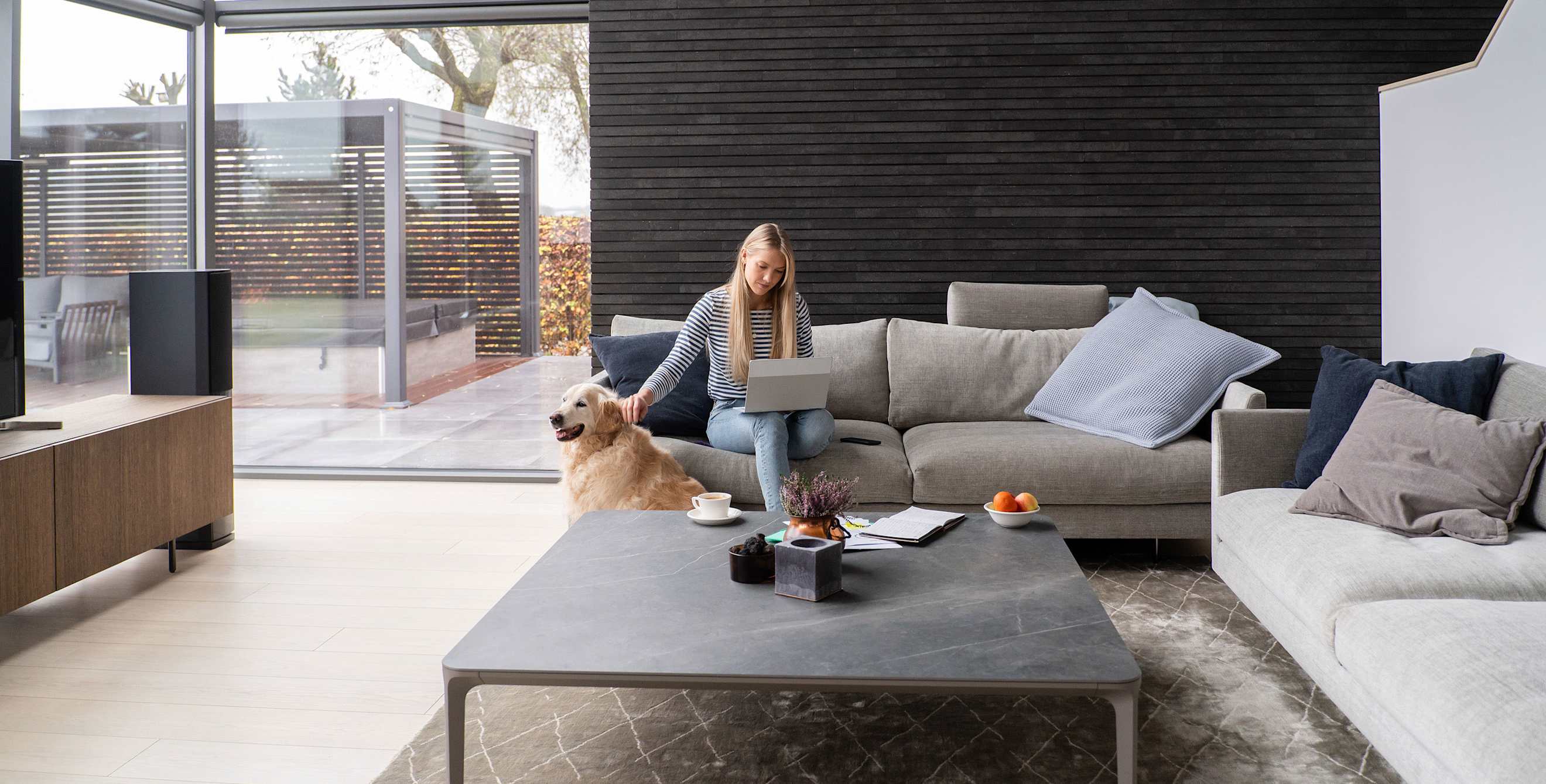
How Technology and Building Advances Are Changing Homes
A flurry of advances are propelling housing into the future.

Wondering about the home of the future? Don’t look now, but you may already be living in one.
“The home of the future looks a lot like it looks today,” says Brian David Johnson, a futurist, author, and professor at Arizona State University who focuses on the world of housing and home-building. “And that’s a good thing,” he adds. “If you suddenly woke up in a Jetsons-style house, it would be a nightmare.”
While we’re increasingly comfortable with technology, no one is clamoring to live in something out of Star Trek. “We like our homes to be comfortable,” says Johnson. “And we actually value houses that are older, of the past.”
So while tomorrow’s home may look similar to the house as we know it, under the hood it is changing fast. Here are four ways the home of tomorrow is being transformed.
Building with Climate in Mind
On the West Coast, droughts and fires continue to upend the housing industry. People could pack up and move to wetter climates, but they don’t. “We want to live where we want to live,” says Johnson. That’s driving home-builders to adopt new materials, particularly those safeguarded with flame retardants.
While many builders are using brick and concrete to protect against the risk of fire, a bunker may not be your only choice for a flameproof future. Consider innovations such as Garnica’s Fireshield, a new plywood that works just like regular panels but has the highest level of certification for fire resistance available in a wood product.
To achieve widespread use of alternative materials, local and state governments will need to get involved. “We’ll see changes in building codes because of the losses we’ve experienced in the past,” says Johnson. “But we need to make the investments now, so that we don’t have more losses in the future.”

Sustainable Energy Advancements
No area gets more press in the home-building world than energy consumption for heating and cooling—another issue that is only going to get worse as climate extremes deepen.
To start, solar isn’t going away. Regions with significant access to sunshine will continue to take advantage of rooftop panels and, increasingly, home batteries such as Tesla’s Powerwall. Costs for both solar panels and batteries have been dropping fast—in both cases by a staggering 90 percent on a per-watt basis in the last 10 years. In California, there are now some times in the year where residential homes produce so much power it exceeds demand, overloading transmission lines.
For Johnson, one interesting solution to the energy dilemma is for neighborhoods or even entire cities to opt to capture energy in large, centrally located batteries, instead of in units mounted in each home’s garage. New wireless networks (like the one used by your phone) will let households communicate their power needs to the grid, he says, “which will allow us to more intelligently manage the energy load.”
Smart Homes Are Getting Smarter
By now, you probably live in a smart home of some level—perhaps with a doorbell camera, smart security system, or just an Amazon Echo device in the kitchen. All of these devices are getting smarter every day, in large part due to their integration of artificial intelligence (AI).
Michael Hetke, president and CEO of AAA Smart Home, says, “We’ve been on a collision course between home security and home automation for a decade, and early-stage AI is already integrated into our systems.” Today, a security camera can distinguish between a person, an animal, and a car—and can even tell whether a vehicle in your driveway is your own or a stranger’s.
But coming soon, cameras will get much smarter. “We’re going to roll out a feature called AI deterrence, where your camera can recognize an unfamiliar person, identify features of that person, and audibly announce, ‘Hey, you in the red shirt and blue shorts, this is private property,’” says Hetke. AI-powered video verification can also help cut down on false alarms, one of the biggest challenges for home security systems.
Hetke says he’s most excited, however, about the near future when smart home technologies that were previously separate start working together as a seamless whole. “We’ll be able to read when your car comes into the driveway, set the lights and thermostat to your preferences, and unlock the door based on video of your face,” he says. “We’re getting to a point where we can finally integrate multiple devices like this much more effectively.”
Affordable Homes, Printed on Demand
Today, 3D printing isn’t just for tiny trinkets and plastic replacement parts. Home-builders are now using the technology to build entire houses, employing a 45-foot-wide printer that pumps out a concrete mixture layer by layer to slowly build up the walls of a home. In fact, the neighborhood of Wolf Ranch, in Georgetown, Texas, was fully 3D printed, making the 100 homes built over the last two years the largest 3D printed community in the world. The homes are currently on sale at prices ranging from $450,000 to $600,000.
Johnson says that this technology allows builders to offload low-level, high-labor work such as framing to machines. Then, after the bones are laid down, humans can come in and do the detail work: adding windows and doors, running electrical lines, installing plumbing, and the like.
That helps builders keep their eye on the big picture. “We have to remember that homes are about people,” says Johnson. “And keeping human beings at the center is really what ‘home’ is all about.”
AAA Members save up to $60 per year on AAA Smart Home Security Monitoring.